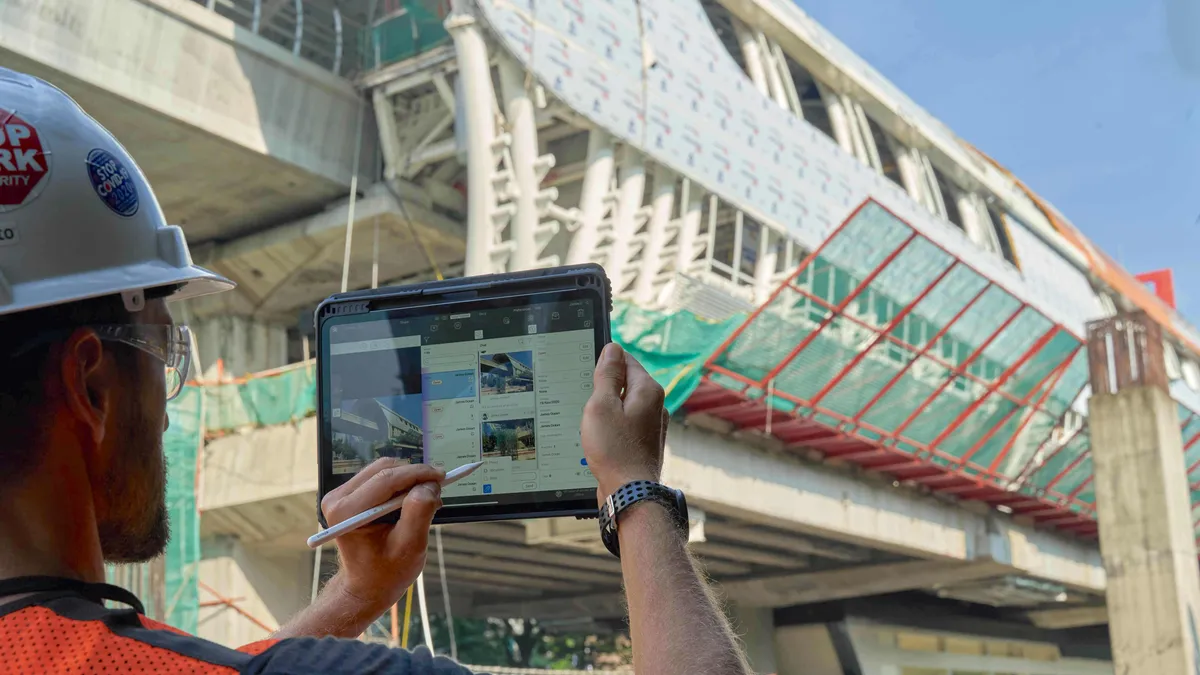To understand the challenges owners, general contractors, specialty contractors, and architects face in most construction projects, consider these:
- 9% of a typical project’s total cost is rework.
- 80% of large construction projects are over budget and take 20% longer than scheduled.
- Nearly 70% of surveyed owners reported that no projects in the last three years came within 10% of the projected cost.
There may be many explanations for these facts. Increasing design sophistication, aggressive delivery dates, complex owner requirements, skilled-labor shortages, supply chain disruptions, and a global pandemic contribute to rework risk and material waste.
Building information modeling (BIM) has proved to mitigate rework and waste with improved design and planning. BIM applications are also being applied to construction, offering AEC professionals new ways to understand constructability across 2D, 3D, 4D and beyond projections.
$1.9 Billion Project
The capability to overlay a 3D design model on a point cloud of as-built conditions presents project leaders a more confident way to detect and minimize structural and MEP clashes. When a conflict is identified, the model helps visualize a remediation approach that minimizes time, expense and material waste.
Imagine, for example, the project-management complexity of the $1.9 billion Allegiant Stadium in Las Vegas, which was awarded Revizto’s Project of the Year designation. The 65,000-seat, 1.75 million-square-foot structure includes 28,000 tons of structural steel, 105,000 cubic yards of concrete and 482,000 structural bolts.
Making sure everything fits together as modeled is the responsibility of 130 superintendents, 2,300 daytime shift workers and 100 firms. “Collaboration means enabling a diverse collective of people to drive results through enhanced communication and trust,” explained Joel Jacobson, senior integrated construction manager of Mortenson, the co-GC on the project.
Integrated Collaboration Platform
Enhanced communication and trust is a challenging goal when stitching together a diverse portfolio of data and applications. How do you present disparate solutions and the latest data to all stakeholders no matter what their role is?
“It’s difficult to coordinate project data when it’s siloed in different applications. A fractured approach risks a lot of rework when people aren't viewing the most up-to-date model or drawing, or using disparate methods for communicating,” observes Greg Keller, senior executive at Revizto, the pioneer, innovator and world leader in integrated collaboration platform (ICP) solutions.
ICP, as the name suggests, is the binding application that ensures all project stakeholders, devices, and locations are working as one on a digital collaboration platform. “ICP helps make sure nothing falls through the cracks to cause a rework situation,” Keller says.
6 Benefits
ICP centralizes workflows, integrating all model types (2D or 3D) and teams. A common, easily accessible project platform extends user capability from the office to the job site, and across smartphones, laptops and tablets. GCs, specialty contractors, architects and owners use ICP to:
- Save Time. No need to switch between tools. Centralize design intent, drawings, models and data into a single platform for digital collaboration, undisputed insight and common understanding.
- Empower All Team Members. No special technical skill is required to easily access, explore, communicate and contribute to the project.
- Provide Real-Time Feedback. Manage markups and issues. Understand your team’s project status through completion.
- Keep Trades in Sync and on Task. Monitor progress in the field, and access project data from anywhere via a computer or tablet.
- Simplify Data Flow. Improve how data is presented. Streamline the communication of models, drawings and data to all team members.
- Automate Labor-Intensive Tasks. Streamline reporting, file versioning, model access and delivery. Enable your team members to focus on mission-critical tasks.
Long-Tail Projects
The director of VDC and integrated services for Massachusetts-based Consigli Construction, Jack Moran, has observed ICP in action for the last five years. For example, the Revizto ICP supports the Consigli team in its work on the seven-year, $650 million deep renovation of the Smithsonian Air and Space Museum in Washington, D.C.
“ICP is our standard for all our projects, starting in pre-con and all the way through construction,” Moran said. “The Air and Space Museum project is nearly a decade-long project. Many project members will come and go. We can’t afford to lose institutional memory because of a departure. ICP provides continuously updated context for every change and decision. It’s essential for traceability, accountability and sustaining context.”
Reduce Rework and Material Waste
For Moran, ICP goes far beyond that. “The big thing is pushing 3D models out to the field. Anyone with an iPad can now view the model and quickly overlay as-built conditions through Revizto. No need to walk to a job box or page through coffee-stained PDFs. With a tap, you can slice a model and inspect in detail. We improve workflow communication, reduce coordination meetings and present better data faster.”
No one can eliminate all construction rework and material waste. The task is to minimize error and excess through ever-improving modeling technology and digital collaboration. Today, ICP is the enabling technology that seamlessly connects architecture, engineering and construction throughout the entire project lifecycle.






